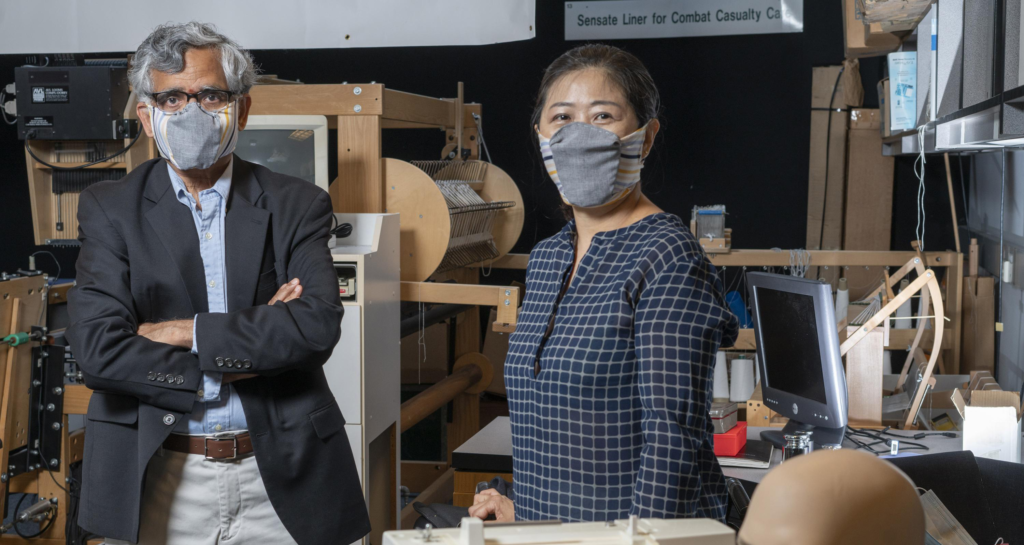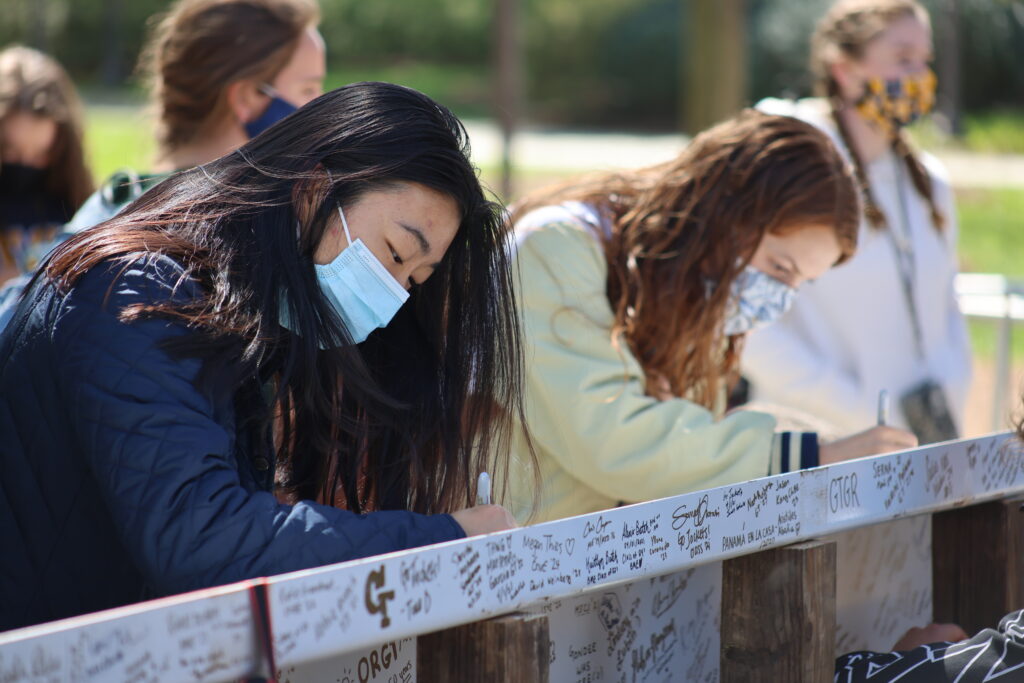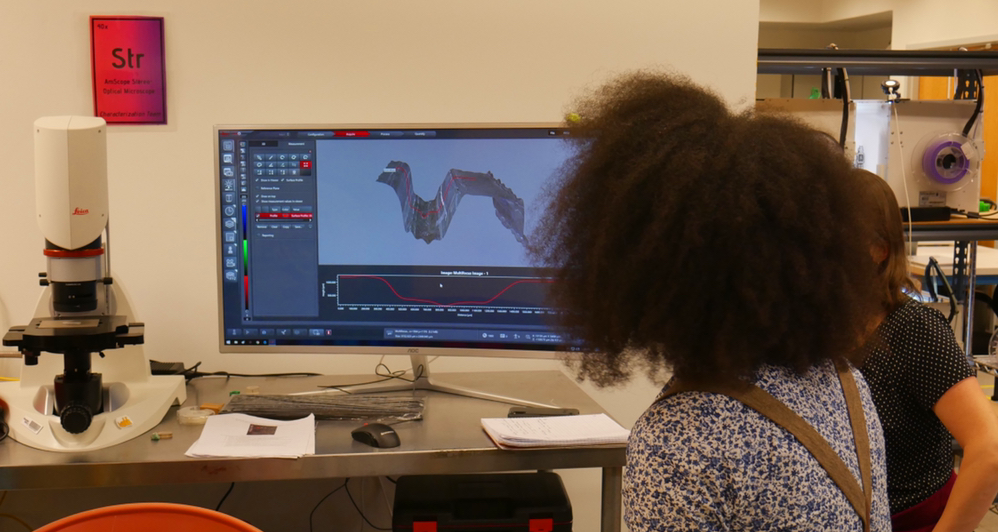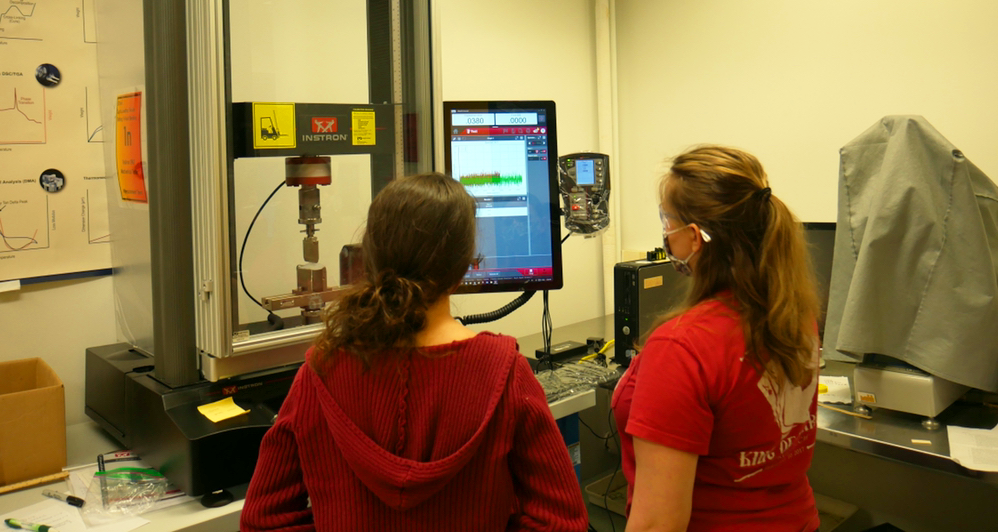Posted on 05 March 2021.

With a commitment to “creating the next,” Tech has been one of the nation’s most research-intensive universities. U.S. News and World Report ranks the Institute as the fourth most innovative school and eleventh for undergraduate research as a testament to the work done on our campuses.
The research conducted by Tech researchers is not limited to Atlanta and there are over eight international locations that host regular institutional research endeavors. Professors in many departments play a crucial role
in this.
“Broadly, how do you make technology better? From enhancing the quality of life. At the end of the day, why did you come to Georgia Tech? Because you want a better life. Right? That’s what we are,” said MSE Professor and Kolon Center for Lifestyle Innovation Founding Director Dr. Sundaresan Jayaraman.
Jayaraman has been active in the intersection of textiles and computing since the 1980s. His path within the field is winding and his experiences are endless.
Jayaraman holds his coworkers and colleagues in the highest regard.
“I’ve been very blessed to have a wonderful set of graduate students and undergraduates who work with me,” Jayaraman said.
“I mean, when you think about research, research is not one person. Right. It takes a team to really make it happen.”
Jayaraman continued by praising Sungmee Park, Principal Research Scientist, MS TE ‘95 and PhD MSE ‘19, who is a long time colleague and research collaborator.
“We were the first ones to integrate electronics into textiles, we made your clothing wearable, you know, today you talk about it, you know, I watch and all those things,” Jayaraman said. “The whole field of wearables was born in our laboratory.”
Working towards minimizing casualties on the battlefield, the group was funded by the government and has designed and produced a “wearable motherboard.” Through integrated sensors in the virtually untouched real estate of clothing, they maximized data collection to identify the severity of injuries to ensure everyone gets adequate help.
The Smithsonian Institute even requested for the shirt they produced to be featured in the National Museum of American History in Washington, D.C..
“It was for the first time electronics and textiles is integrated giving rise to the field of wearables,” Jayaraman said.
Virtually, the Fitbit’s and Apple Watches’ of today can be traced back to the work done on the Smart Shirt.
This project was further developed and diverged into the field of smart and electronic textiles.
They have developed shirts for babies to monitor for Sudden Infant Death Syndrome at Children’s Healthcare of Atlanta.
Most recently, they have released the next generation of masks. Receiving funding from the CDC in 2008, during the H1N1 pandemic, the lab built most of the groundwork for mask research.
“The grand challenge was, how do you balance the degree of protection with the degree of comfort. Right. If you take a bandage fabric, when you put it on your face it’s very comfortable but all the bad guys are good to go in. If we take a plastic wrap, nothing will go in, but you will just suffocate. So what we need is a good balance between plastic wrap and this nice bandage fabric,” Jayaraman said.
They have successfully created a comfortable and safe mask, ensuring it could be easily accessible to the public.
“Rather than patenting, the technology is made available. If you go to Georgia Tech website, you can print out and make the mask, step by step, we lay out how to make it,” Jayaraman said.
Dr. King Jordan, a Bioinformatics Professor at Tech, has also worked towards improving society with his research.
He is focusing on the field of genomics, the act of studying genes and the functions they are associated with.
“My interest in genomics goes back to the pre-genomic era. So, when I was an undergraduate, I took a genetics course and I was just really intrigued by genetics” Jordan said.
During his PhD in the 1990s, the genomic era was blooming and hooked him to research.
“It was subconscious at that time that there was this intersection of information science, information technology and biology,” Jordan said. “That was really going to be transformative for research.”
This transformative research has led to a search for genomic determinants of pathogenicity and antibiotic resistance along with relationships between ancestry and genomic determinants of personal health.
With a shift in institutional goals in the late 2000s, Tech has rapidly increased external research and global impact, through programs that both Jayaraman and Jordan have been a part of.
Jordan had been invited by Columbia’s Science and Technology Ministry to act as an external advisor to their genomics efforts in 2007. Following this meeting, he was present more often, advising, and offering workshops.
During one of his first classes taught, he had noticed one of the most eager participants was a young undergraduate who presented good questions.
“She came up to me after class and she thanked me for coming so far to teach,” Jordan said. “And I was feeling good about myself and then I asked, ‘Well what about you?’ and she had taken a bus 25 hours to get to that class. So, this to me really underscored the thirst and the hunger for knowledge down there so I found that very rewarding.”
Thus when given the opportunity to establish and sustain the PanAmerican Bioinformatics Institute, Jordan pursued it.
With the goal of producing sustainable capacity in Latin America for bioinformatics and genomics, collaborative research is pursued, short courses on bioinformatics and genomics are provided and student exchanges are conducted.
Jordan once again returned in 2016 as a Fulbright scholar and launched the chocoGEN project.
“I tried to essentially initiate several different initiatives that would help nucleate our [Tech’s] efforts there,” Jordan said.
With a new National Center for Bioinformatics in Colombia, a master’s program at Universidad de Los Andes and several exchange students participating in graduate studies at Tech, it is clear the initiatives have assisted with the rise of bioinformatics in Latin America.
“It is most gratifying seeing young people trained in genomics and bioinformatics either going back to Colombia to work in research institutes there or working from here but carrying the torch in terms of facilitating collaborations with countries in Latin America,” Jordan said.
Jayaraman and Park similarly established the Kolon Center for Lifestyle Innovation, with the goal of lifestyle innovation through materials and manufacturing while increasing economic development between Georgia and South Korea. With $3 million in funding, projects from many different disciplines are funded.
As of now, 10 projects are under completion or have been completed.
For students who are interested in research and partaking in undergraduate work, both professors have some advice.
“First and foremost is, don’t do it because your peer is doing it. It doesn’t work that way,” Jayaraman said.
Jayaraman emphasizes the value of having fun with research. “Get started as early as possible,” Jordan said. “Georgia Tech offers a lot of different mechanisms for undergraduates to pursue research.”
He further highlighted the importance of mentorship, as well as actively looking for a student mentor rather than singularly relying on your principal investigator.
“They can give you better advice in terms of the actual techniques and tools that are used in the lab,” Jordan said. “They are useful to you, as an undergrad, to provide relevant advice about the process of applying to graduate school.”
Jayaraman further emphasizes going into research with the goal to improve the world. Having the right attitude and willingness to do something that is good, not just for yourself, but for society,” Jayaraman said. “The beauty is that you can always do well by doing good.”







